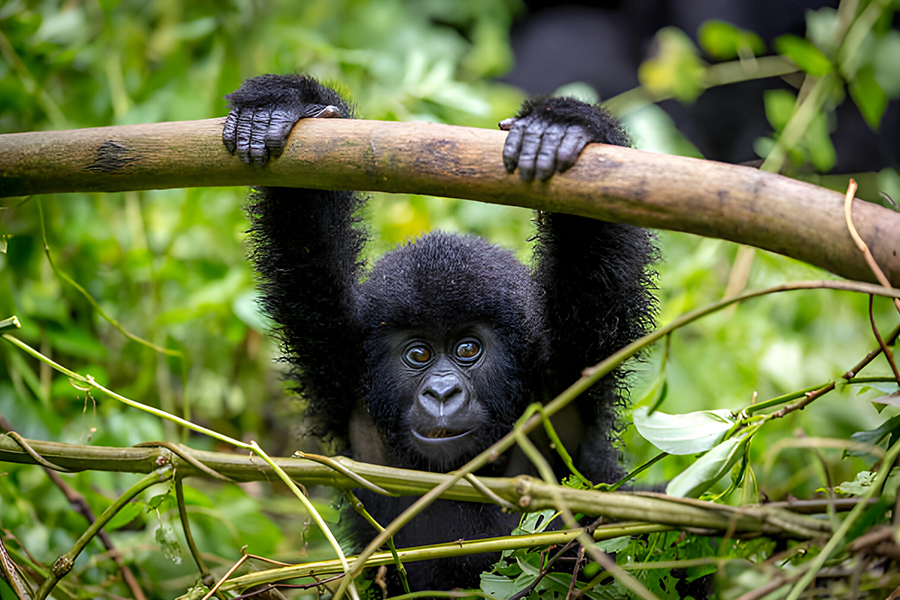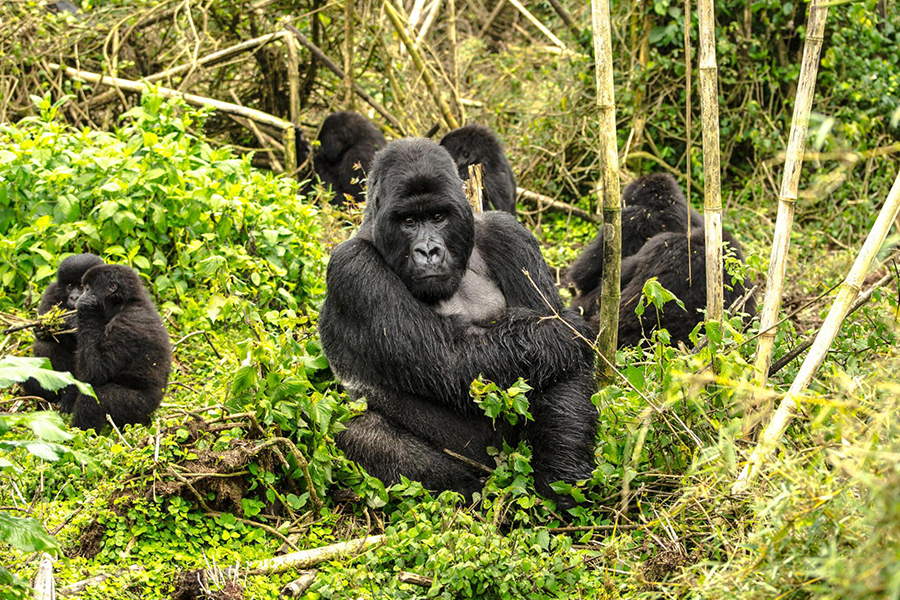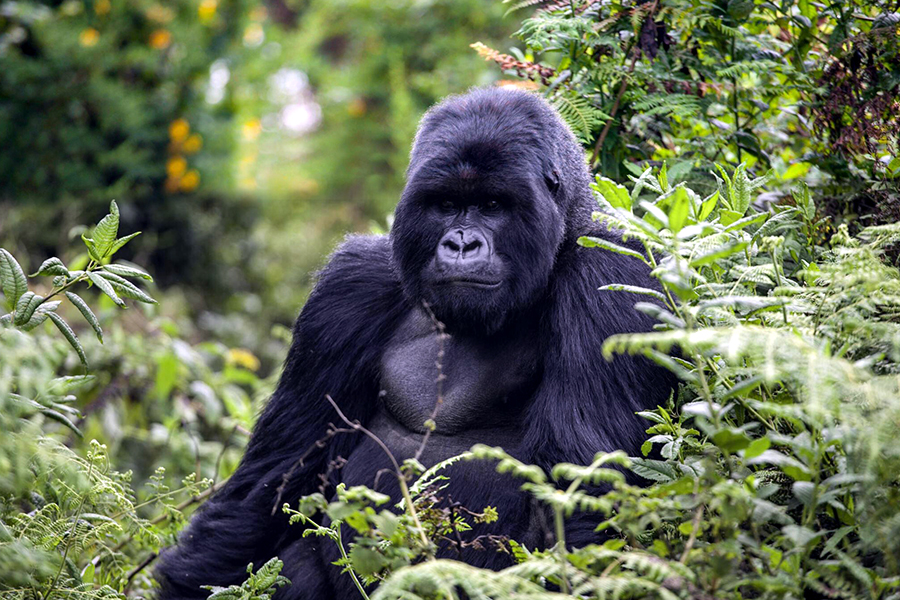The largest of the great apes, gorillas, inhabit the tropical forests of equatorial Africa. These primates are divided into two species: the eastern and western gorillas, with their habitats separated by nearly 900 kilometers (560 miles).
Eastern gorillas are residents of the Democratic Republic of the Congo (DRC), Uganda, and Rwanda, while western gorillas can be found in:
- Nigeria
- Cameroon
- Central African Republic
- Equatorial Guinea
- Gabon
- Republic of Congo
- Angola
- DRC
The alarming rate of deforestation threatens the habitat of gorillas, spurred by activities like farming and mining. Human encroachment exacerbates the issue, prompting efforts from organizations to support Gorilla conservation.
They focus on tree planting and establishing natural buffers between humans and gorillas. Currently, the remaining populations of these animals are primarily isolated and safeguarded within National Parks.

Where do they live?
Mountain gorillas reside in high-altitude forests, ranging from 8,000 to 13,000 feet, where temperatures frequently dip below freezing. They boast thicker fur compared to other great apes, aiding in survival in such harsh environments.
However, escalating human encroachment has displaced them further into the mountains for extended periods, subjecting them to perilous and occasionally lethal conditions.
Despite challenges such as civil conflict, poaching, and human encroachment, conservation efforts have led to a positive turnaround for mountain gorillas. In recent years, both populations have seen increase in numbers, offering hope for their continued survival.
Distribution
Western lowland gorillas make their home in the lush tropical forests of:
- West Africa
- Spanning across Cameroon
- Central African Republic
- Gabon
- Congo
- Equatorial Guinea
The gorillas of eastern lowland thrive within the tropical forests of the Eastern Democratic Republic of the Congo.
The mountain gorillas find their habitat in the high-altitude tropical forests of Zaire, Rwanda, and Uganda, specifically around the Virunga volcanoes, at elevations ranging from 1,650 to 3,790 meters (5,413 to 12,435 feet). The Cross River gorillas occupy a limited area straddling Nigeria and Cameroon.

Population
The western lowland gorillas, which are numbered around 92,000 in 1999. However, this figure fails to account for the detrimental effects of the bushmeat trade and Ebola virus since then.
Many live in isolated groups, limiting access to potential mates. Such isolation can impact population health and significantly diminish future birth rates.
In 1998, the eastern lowland gorillas were estimated to have around 17,000 individuals in isolated populations. However, the population has likely suffered due to the bushmeat trade and warfare since then.
The mountain gorillas are divided into small protected family groups, approximately 380 individuals around the Virunga volcanoes and 320 in the Bwindi area.
Despite residing in protected parks, threats like disease outbreaks, environmental disasters, and genetic isolation pose significant risks to their population.
Conservation International and the primate specialist division of the IUCN classify them among the 25 most endangered primates.
The Cross River gorilla’s population is estimated at 250 to 280 individuals. Conservation International and the primate specialist division of the IUCN categorize this species among the 25 most endangered primates, highlighting the urgent need for conservation efforts to protect and preserve their dwindling population.
Visit https://animalkingdom.org/ to learn more about these magnificent primates and other amazing species of wildlife.

